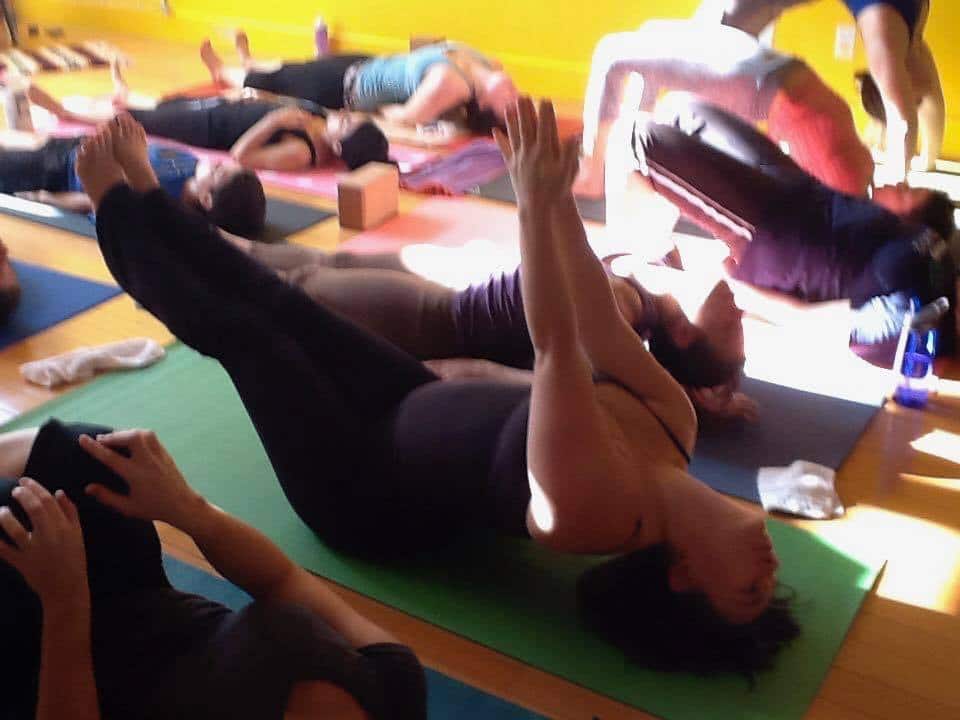Study.
Do we cringe at the word? Does it feel like punishment?
In yoga, the term “svadyaya” means self-study and study of tradition or ancient texts (often said as scriptures but I didn’t want to get anyone going).
Self-study is a part of the second limb of yoga, the Niyamas. There are five: Contentment, Discipline/Devotion, Purity/Cleanliness, Self-Study, and Surrender to something Greater than ourselves.
So how do we study study? LOL.
And how do we practice it?
Self-examination would have to precede self-realization. Before we can actualize our highest selves we need to understand the self we reside in today.
What does “the self we reside in today” mean?
Who are we today? How do we respond to events and actions and emotions? How do we express ourselves? What do we believe and how do our actions, words and intentions reflect that? And how do all of those observations stack up against who we are becoming? (I know, deep, right?)
ASANA
In asana, yoga poses, how are you studying to get ready for poses? There’s anatomical study, there’s yoga/ayurvedic study (the health benefits of a pose), and mental health study about the poses (chakra energies/psychic energies)
The poses below are the ones I chose to work on for myself.
Cross-legged chair. This is a fiery space of hips, core and one-legged balancing. I think it gives me so much to put my attention on it’s hard for my mind to stray. But I end up “working” it so much I never find peace. So I wanted to study where the balance point in my mind and body is to find peace.
Dancer. This is another one-legged pose. It’s actually one I’ve had a love-hate relationship with. I love the tension-relaxation that’s needed as one presses the foot into the hand and frees the heart (or tries to). I also know that it offers me a space to study my ego and a desire to “look good” or “fancy” in a pose and pride at being able to do it “well.” So I want to find a space of peacefulness and no desire to be admired. (also my hips are changing as I age and it’s a bit of a struggle to feel pretty in it when I feel stiff)
Mermaid. Twists enmesh the left side and right side of energy to support and uplift each other in a spiral. It’s the epitome of collaboration and support and balance. This one also involves lengthening the psoas, which weaves through the pelvis into the inner back muscles, connecting me to awareness of the interconnectedness. Oh, my legs affect my back? Oh, my hips have insides and sides? Studying on how things relate to other things is important. Otherwise I know I feel like I can be in charge or that efforts and energies exist in a bubble – physically, verbally, geographically (and that’s not true).

Fish. Oh, the heart. Baring my heart has been a lifelong hesitation and aspiration. It’s been wounded. It’s been cavalier. It’s been in hiding. So Fish Pose, especially supported Fish, offers tons to study. TONS. How to soften while everything on my heart is open and exposed. Feeling small physical tensions which I know are big mental and emotional blockages. Accepting every nuance of sensation in between the shoulder blades (back of the heart) and the relationship with the front. And lastly, my acceptance of tiny, tiny movement in my heart physically, and how it reflects small movement in my emotional heart – forgiving old wounds, being understanding of my flaws, accepting everything I cannot control. Whew. Yay! Ready to dive right in.
ACTIONS
What comes up about our habitual tendencies in our yoga practice (breath, poses, meditations) that illuminates something about our behaviors in the real world? What can we be noticing and being mindful of in our interactions with others?
BREATH
Study of breath can involve:
- Noticing when we hold our breath and why
- Noticing breath volume capacity and how it feels as we grow that capacity. What are we growing capacity for physically (health benefits) and mentally (emotional benefits).
- Observing the emotions that are carried on our breath – relief in a sigh, exasperation; hope in a held breath.
You can choose any breath (not bastrika or kapalbati) and observe. They can be as simple as abdominal breaths or alternate nostril breaths.
READINGS
“Svadyaya therefore means to get close to yourself, that is, to study yourself. All learning, all reflection, all contact that helps you to learn more about yourself is svadyaya. In the context of the niyama we find the term often translated as “the study of ancient texts.” Yes, yoga does instructus to read the ancient texts. Why? Because we cannot always just sit down and contemplate things. We need reference points. For many this may be the Bible or a book that is of personal significance; for others it may be the Yoga Sutra.” – T.K.V. Desikachar, “The Heart of Yoga.”
- Your sacred/spiritual books
- Yoga books like “Heart of Yoga,” “Lilias Yoga!,” “Deeper Dimensions of Yoga.”
- Trauma healing books (if applicable)
You will note I’m mentioning books and texts, not websites. Dive in a little deeper and involve yourself in the reading, not the drive-by of the information/lesson.